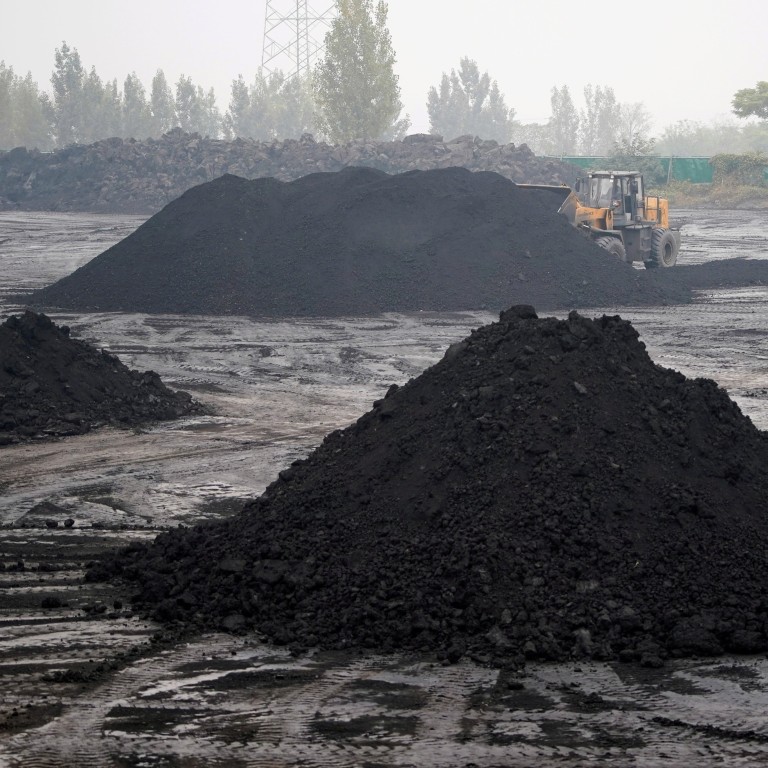
China’s carbon neutral goal: could small steps prove smarter than great leaps?
- Local governments are under pressure to meet Beijing’s ambitious emissions targets, but their efforts have inadvertently contributed to power outages
- Some are calling for a more sophisticated approach, warning that campaign-style governance that dates back to Mao Zedong is too simplistic
China has a long history of campaign-style governance – a one-size-fits-all approach that some observers view as flawed.
“There are two main reasons for the power outage,” said Xu Jintao, professor of economics at Peking University. “The main reason is that the government-controlled electricity rates did not match the market-oriented coal prices [making it unprofitable for electricity providers], and the second reason is that some provinces are under pressure over climate targets.
“Electricity rationing is a manifestation of campaign-style carbon reduction.”
The campaign-style approach can be dated back to Mao announcing his vision for the Great Leap Forward – a five-year plan to boost the country’s output, aimed at surpassing that of the United States.
Unrealistic targets set by the central government led local officials to exaggerate their achievements, emboldening the central government to set its sights even higher. The campaign was abandoned three years later after mass starvation that caused more than 36 million deaths, according to the estimate of former Xinhua journalist Yang Jisheng.
Some academics warn that the central government’s ambitious climate targets could prompt local officials to take counterproductive measures in their haste to follow the campaign.
“One important lesson from the Great Leap Forward is to avoid the one-size-fits-all approach and unrealistic targets,” said Gu Su, a political scientist at Nanjing University.
“In our system, officials’ political achievements are related to figures. The climate targets are also an indicator for appraising officials, so some of them will take drastic measures to implement instructions from above.”
In environmental protection, some drastic moves have produced short-term effects that were unsustainable or even caused a later rebound.
In 1997, the environmental protection bureau carried out a massive campaign to clean up rivers and lakes. More than 6,000 on-site investigations were conducted the following year and 149 enterprises were penalised for illegal discharge of waste. Water quality in northern China’s Huai River achieved certain targets before quickly deteriorating as pollutants continued to increase.
In 2010, the State Council, China’s cabinet, said it would hold to account officials who could not meet energy-saving and emissions-reducing targets set in 2005. Having set a goal of cutting 2005’s level of energy intensity (energy consumption per unit of GDP) by 20 per cent by 2010, the country was three-quarters of the way to achieving it by the middle of 2010 – causing a rush to make up the other quarter in just six months.
Under huge political pressure, provinces took extreme measures to curb energy consumption, with a number of them introducing power rationing and production limits in heavy industries such as cement, steel, petrochemicals and coal. It was followed by a production rebound and China recorded its smoggiest days for five decades.
“Campaign-style carbon reduction intensifies the conflict, resulting in a large number of companies being forcibly closed and short-term unemployment,” Xu said. “The effect is unstable and emissions will increase after the campaign.”
Everything you should know about China’s power crisis
China’s coal production in October rose to its highest level since at least March 2015, according to Reuters, as the central government moved to address power shortages. Between July and October, expansions were approved at 153 coal mines, which will boost coal output in the fourth quarter.
“Energy consumption and energy intensity targets are useful, but they are too simple,” said Ma Jun, a director of the Beijing-based Institute of Public and Environmental Affairs. “We need long-term, scientific and systemic evaluations.
“Our energy transition is far from completed and may be harder than we anticipated, so we need to take refined measures, not the simplified, one-size-fits-all approach, towards high-carbon industries.”
Peking University’s Xu said China should build a long-term mechanism to reduce emissions, including legal and economic measures.
“To implement the long-term mechanism, we need to mobilise local governments to improve environmental enforcement as well as reduce the social cost of carbon reductions,” Xu said. “A carbon tax is the best means, because it can contribute to the local economy and mobilise officials.”
But with the economy having been disrupted by the pandemic and facing downward pressure, introducing a carbon tax could be difficult, Ma said.
“A carbon tax is also related to data disclosure and accounting,” he said. “We need to improve data quality and conduct long-term, refined evaluation of provinces and enterprises based on that data.”


